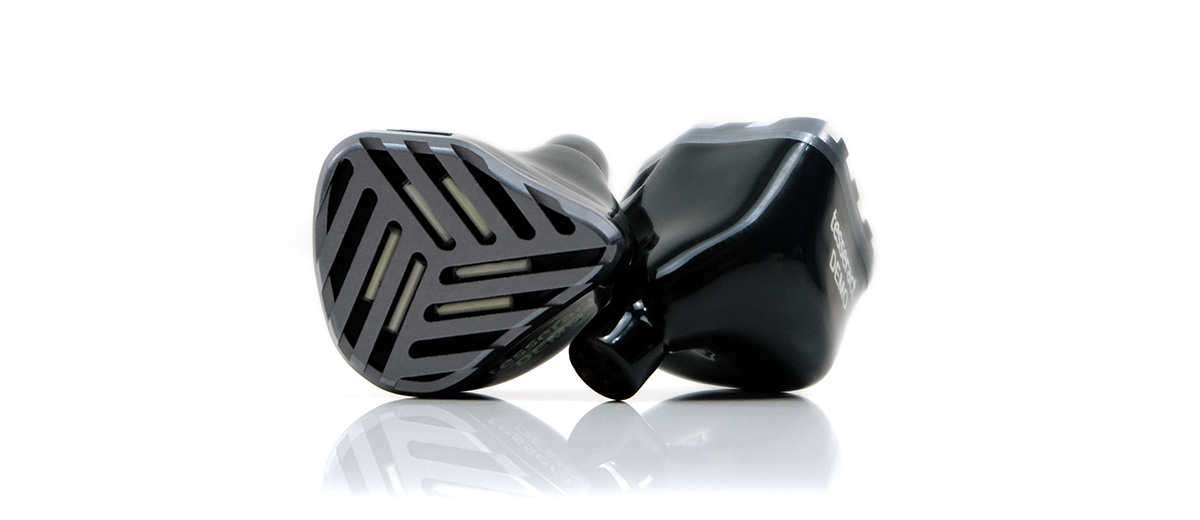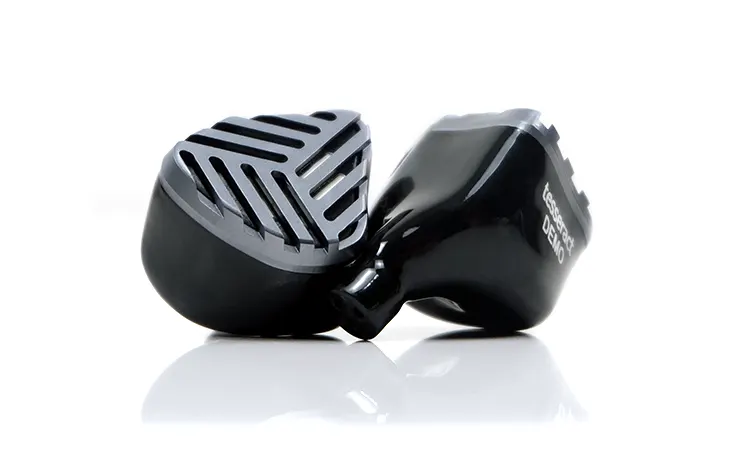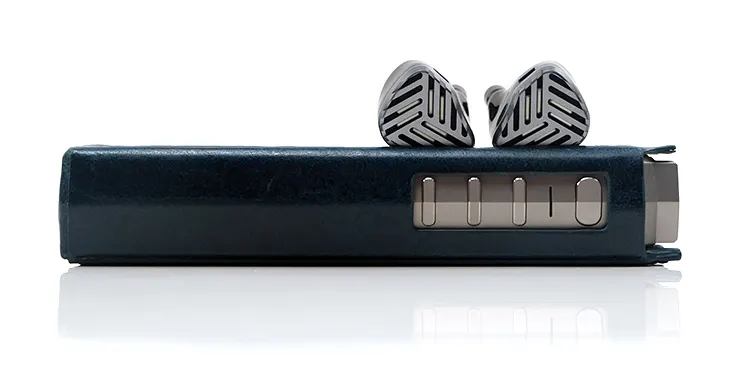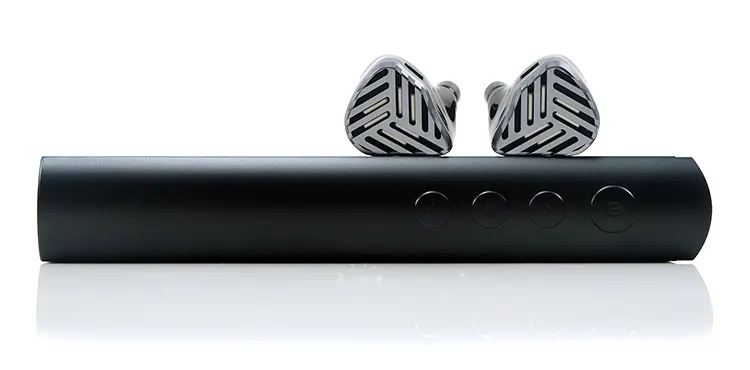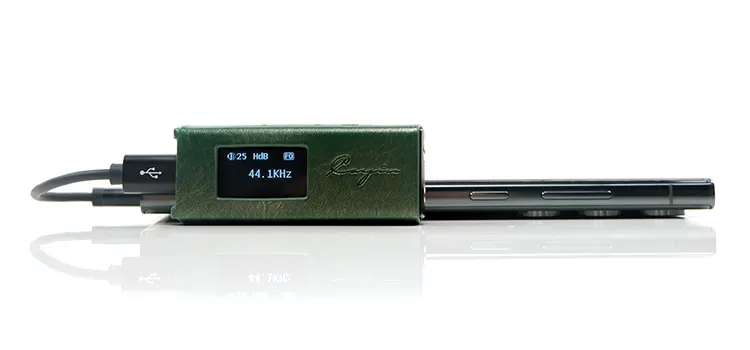Sound Impressions
Sound Summary
The Nostalgia Audio Tesseract is right up there with the likes of the Noble Audio Ronin and the Multiverse Mentor for delivering a highly-resolving and expansive performance.
Certainly, what one would expect from a flagship in-ear monitor in terms of detailed imaging from those large BA driver arrays but the more surprising aspect is just how natural it sounds with an almost analog overtone.
Overall, the tuning is supremely balanced. There is nothing out of whack, no deep overpowering bass notes nor an overly pushed treble presence to create a false perception of height or an overly sweet midrange quality.
It’s more to the accurate side than the Ronin or the Phonix for its harmonic balance but still quintessentially a firm rounded tone with excellent textured detail throughout.
Much of that comes from a plumper mid-bass punch compared to the likes of the Ronin and a stronger midrange and vocal presence compared to the Multiverse Mentor, (custom version). Those twin peaks deliver a welcome firmness in its note timbre despite the cavernous soundstage.
If there is one query I suspect it will come from the relaxed treble quality despite using no less than 6 electrostatic drivers. Some might prefer more push from the dedicated BA drivers for the highs but I have no issue with the overall headroom the Tesseract generates which is where the EST drivers primarily focus on.
The EST drivers are primarily responsible for that ethereal-sounding upper treble from the Tesseract; a ‘delivery without walls’ would be an apt description of how everything dissipates and fades into the horizon so smoothly.
Frequency Response
I spoke of balance and the Tesseract exemplifies that with a frequency response that has more of a gentle nudge north or south of the ideal Harman Target Curve throughout rather than huge dips and valleys.
There is no huge sub-bass performance here though you can hear the extension hit right down to 20Hz such is the space and air afforded to its low-end presentation. Not surprisingly really given it is using a dual BA rather than a denser albeit slower dynamic driver configuration.
Low-end elevation peaks from 50-100hz then it slowly dives down to about 800hz before you get a quick jump up around 1-2k.
That gentle drop retains a bit of warmth and a nice solid mid-bass punch. It’s not as heavy-handed on the lows as the Multiverse Mentor which has a stronger bass presence but is certainly juicier than the flatter Ronin bass performance.
Mids are exceptional. Though a bit south of the target curve peaks beyond 2k it is strong enough to stand out beautifully, particularly for male tenor vocals. There is a little bit of a drop around 3k but not huge with the rest of the 3-5k curve staying relatively mild in elevation.
The lower treble from 5-8k has a bit of a dip in energy hence that rounded tone you get through the mids. It lacks a bit of energy here if you like your percussion with sparkle and bite you won’t get that here. It’s more on the weighted and dense side tonally.
You get a minor bump around 8k but nothing overly noticeable. So, from 5k onwards you get a fairly smooth and linear fade but it does retain a lot of solid energy post-10k so it will never sound walled-in or rolled off.
Timbre
To call the Tesseract timbre smooth might be doing it a disservice. It’s certainly got an analog and firm-bodied tonal quality to it but I find the harmonic balance to be more accurate than the sweetness of the Phonix or the beefier warmer tuning of the Multiverse Mentor.
What it does not have is a high contrast tone, more of a rounded quality with a slight bias to a harmonic lower order courtesy of a relaxed upper mids and lower treble tuning.
The BA mix keeps it tight though but not so tight that the notes are dry and clinical sounding. There is enough of a natural decay there to give it a more realistic tonal coloration so definitely not an analytical tone.
In fact, mixing it with clean sources seems to take some of the magic away from the Tesseract tuning or, what makes it sound great in my opinion.
Sources like the DX320 MAX Ti will do wonders in teasing out that soundstage capability and even give you some treble sparkle but the flatness in the lows robs it of that natural overtone that forms an essential part of the Tesseract’s identity.
Stick with something like the Cayin N8ii or the HiBy RS8 and you get a better understanding of where the Tesseract shines and it’s really those gorgeous vocal performances.
The Tesseract can swing to the slightly sweeter and richer side with the N8ii or the more accurate alternative with the RS8 but at all times they sound wonderfully effortless without exaggerated sibilance or thinness creeping in.
Staging & Dynamics
Staging is a very strong quality with the Tesseract. It is up there with the Multiverse Mentor in terms of width and height and only beaten in terms of power and presence at the low end.
Perhaps that is where there is an Achilles Heel with those BA drivers giving you a solid punch but not quite the growl that bass lovers might be used to from bigger dynamic drivers. O course you can thicken up that low-end with the Symbio tips but I still prefer the stock silicone alternatives for the additional staging space and clarity they can offer.
There is a plus in that, however, and that’s the huge space Nostalgia Audio has been able to carve out in the Tesseract mids and highs without having to overly counter a booming low-end. You get a wash of incredible detail but not shoved down your throat at the same time.
Vocal imaging is forward but not overly so. More forward than the Ronin or the Mentor but less so compared to the Phonix or Odin. They took take center stage but that stage is very wide and open sounding so instruments have tons of room to command their own space.
One thing I do need to mention is the stock cable and how it shapes the staging and dynamics compared to a few aftermarket versions. It is excellent in terms of width and creating a nice complex midrange acoustical arrangement with great vocals but it can sound a shade neutral on the lows compared to some alternatives.
Cables such as the “Deep of Universe” stock from the Multiverse Mentor and PLUSSOUND’s Hybrid+ gave the Tesseract a more holographic quality to the performance, perhaps a better dynamic range and a bit more bass presence also.
Synergy
Efficiency
The Nostalgia Audio Tesseract is rated at 18Ω impedance with an SPL of 118dB @ 1kHz 1mW.
Normally I would dismiss these and assume it will not be as efficient as the paper rating suggests given it’s loaded with no less than 6 EST drivers and historically, their supporting energizers can be demanding for power.
However, in this case, the Tesseract was surprisingly efficient and easy enough to drive from both dongles and DAPs. Certainly, against our compared monitors on page 3, the Tesseract was almost the easiest of the three to drive including the Multiverse Mentor, Ronin, and the Vision Ears Phonix.
A decent DAP such as the Cayin N7 or the FiiO M17 and dongles with good headroom such as the Cayin RU7 or the Questyle M15 will be more than enough for the Tesseract to sound optimal, even in a low gain setting for DAPs.
Personally, I would opt for a balanced Stage II gain setting with the DX320 MAX Ti just to keep it from sounding too soft and neutral and going balanced high gain from the likes of the RU7 and M15 where the additional power improves the dynamic range of the Tesseract.
You should have no worries with any resulting noise or background hiss from going up a step in power, the Tesseract does not pick up background hiss quite like super sensitive IEMs such as Andromeda or the older Empire Ears Zeus.
DAP Pairings
I tested four DAPs with the Tesseract including the Cayin N8ii and the lower-tier N7, HiBy’s RS8, and the iBasso DX320 MAX Ti.
The Cayin N8ii is the ideal pairing for vocal lovers. Not just because it sweetens the timbre and gives them center stage but it also injects a bit of warmth into the lower mids from its Tube timbre using the Class AB+ mode.
The textured detail from soulful vocal performances was spectacular with excellent body and lots of detail, especially with breathy vocal tones. This pairing will bring you one step closer to one of the best BA vocal performers I have heard, the VE Phonix.
Both the Cayin N7 and the RS8 also deliver a quality analog performance with the Tesseract with the RS8 a bit more neutral in vocal imaging and the more tonally accurate of the two. It is also more resolving but I do give props to the Cayin N7 for offering perhaps the most spacious performance of the four DAPs.
It lacks a bit of top-tier detail but with a slightly thicker timbre and loads of separation and width, it gelled with the Tesseract in much the same way as it did with the Multiverse Mentor. Spacious-sounding IEMs always do so well with the N7.
The iBasso DX320 MAX Ti will give you a complete performance with the Tesseract in terms of transient speed, and micro-detail, and also flesh out the best treble articulation among the compared DAP pairings.
Of the four, it is the most complex sounding and a very good pairing if you want to hear those BA drivers at their most resolving. However, it has the most neutral bass performance and lacks a little bit of emotion or connection compared to the other four DAPs.
Dongle Pairings
Four dongles were tested including the Cayin RU7 and the RU6, HiBy’s FC6, and Questyle’s M15 using a Samsung S23 Ultra as our transport.
Of the four, the FC6 and the M15 deliver the strongest bass dynamic or the low-end with the most fulsome tone. However, I felt the M15 was a bit too clinical and intimate to get the best out of the Tesseract midrange despite offering the strongest treble presence among the four dongles.
Like the DX320 MAX Ti, it does not quite gel with the analog tuning of the Tesseract and as much as possible I want to preserve that magic. Not that the pairing becomes sterile but it doesn’t quite have the vocal magic of the other 3 dongles.
The FC6 delivers the richest and densest lows and mids with the Tesseract but the highs are a bit lacking giving it a slightly darker overtone. The vocal texture is very good though and it’s a cracking pairing if you like a broad richly textured voice in your music.
Of the two Cayin dongles, the RU7 delivers the more complete performance and takes advantage of the spacious stating capability of the Tesseract quite well. It sounds big and spacious with excellent stereo width and improved separation over the RU6.
Though not on par with the N7’s resolution the RU7’s relatively analog sound meshes well with the Tesseract’s similarly analog tuning. The RU6 is sweet, warmer but more mid-centric with a softness on the lows and some nice sparkle in the highs. It’s a forgiving relaxed presentation with great vocals but I prefer the RU7’s more precise and open sound.
Click on page 2 below for sound impressions and our recommended pairings.

